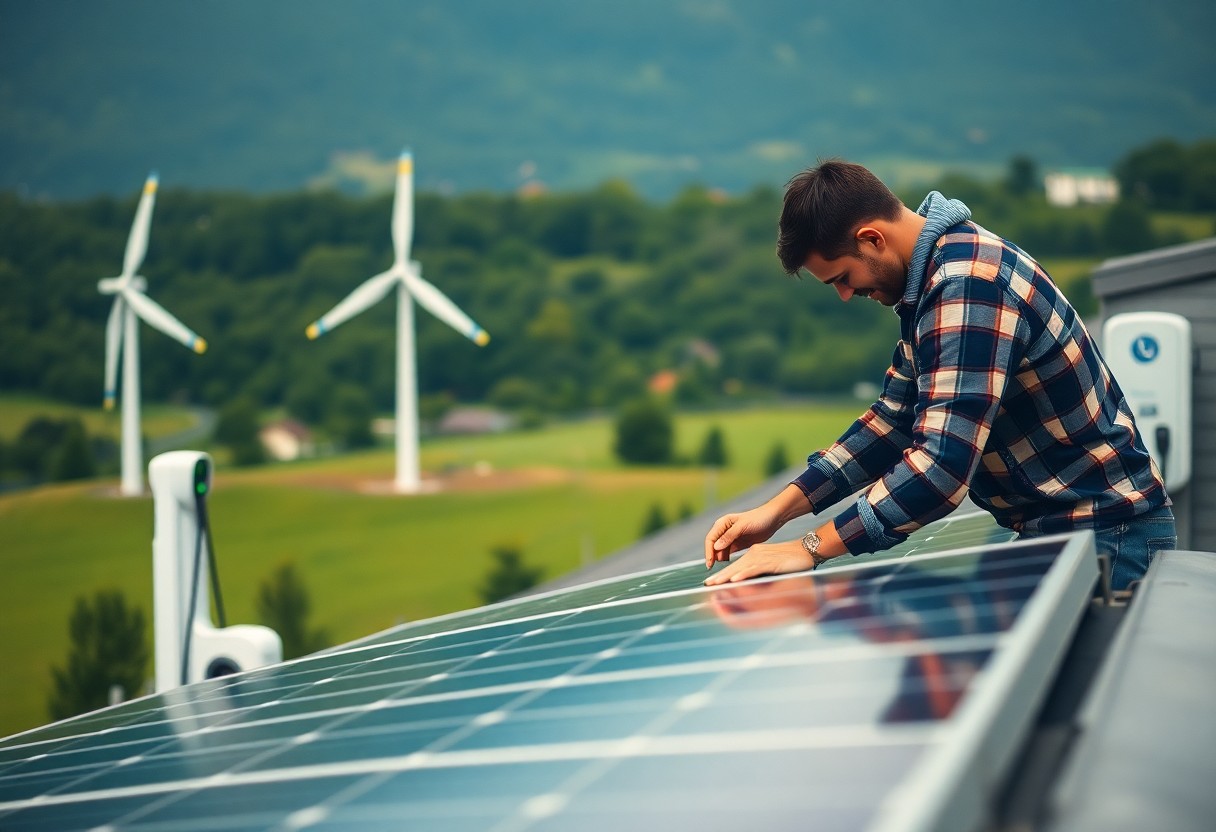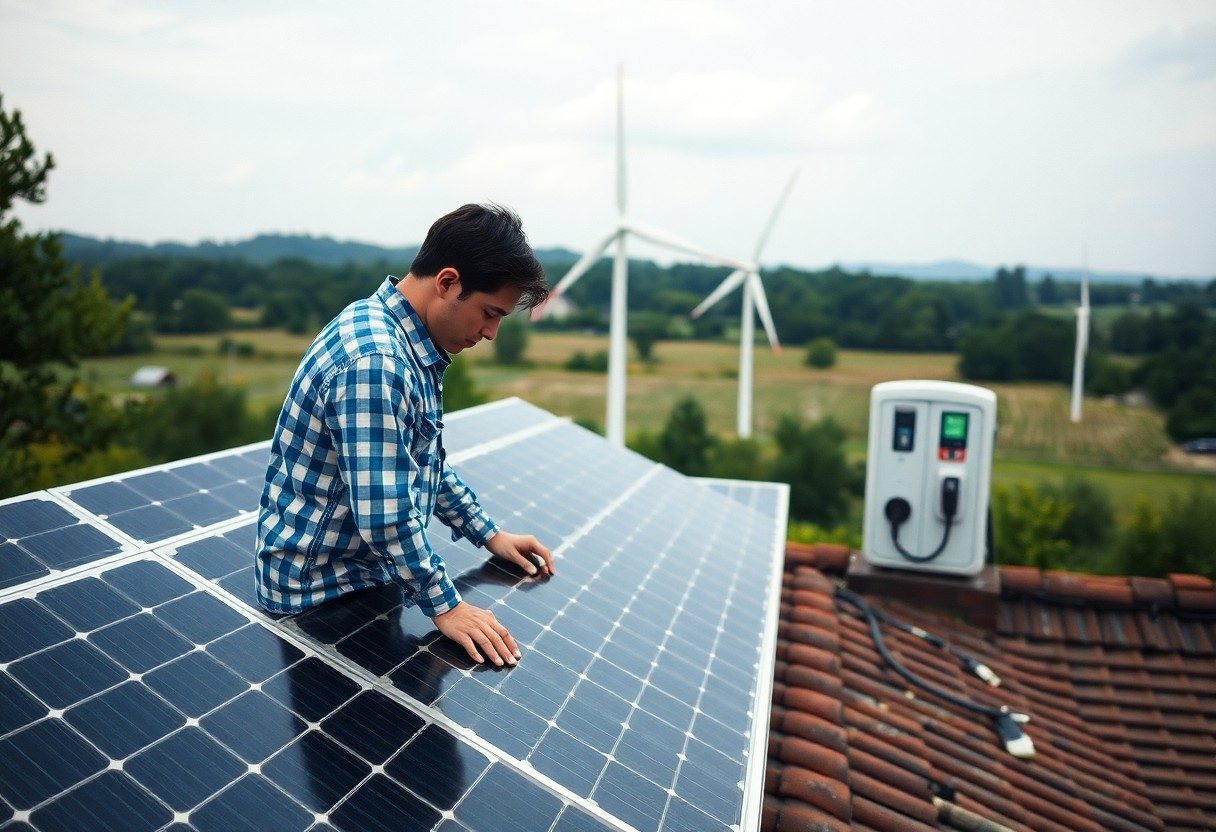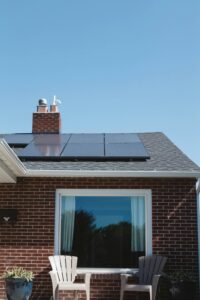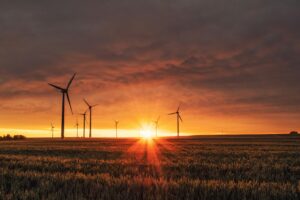Independence from traditional energy sources empowers you to take control of your energy needs while reducing your environmental impact. In this guide, you will discover innovative DIY renewable energy solutions that can help you generate your own power, ensure stability during outages, and save on utility bills. You’ll learn about solar panels, wind turbines, and energy storage options, along with practical tips for safely implementing these systems in your home. Transitioning to renewable energy is not just advantageous; it’s a step towards a more sustainable future for you and the planet.
Key Takeaways:
- Self-Sufficiency: The guide emphasizes the importance of becoming energy independent through DIY projects that harness renewable resources.
- Diverse Solutions: It provides a range of practical approaches, including solar, wind, and hydro systems, tailored for different environments and needs.
- Cost-Effective Implementation: The book focuses on affordable methods to create renewable energy solutions, making it accessible for individuals to adopt sustainable practices.
Understanding Types of Renewable Energy
While exploring renewable energy options, it’s imperative to understand the different types available. Each type has its unique attributes and applications. Below is a breakdown of the main types:
| Type | Description |
|---|---|
| Solar Energy | Harnessing energy from the sun through solar panels. |
| Wind Energy | Using wind turbines to convert wind into electricity. |
| Hydropower | Generating electricity from flowing water. |
| Biomass | Utilizing organic materials for energy production. |
| Geothermal Energy | Extracting heat from the earth’s core for power generation. |
The diverse types of renewable energy provide sustainable options for your energy needs.
Solar Energy
For homeowners looking to cut energy costs, solar energy presents a viable solution. By installing solar panels on rooftops or in your yard, you can harness the power of the sun and generate electricity. This not only reduces your carbon footprint but can also lead to substantial savings on utility bills.
Wind Energy
Energy generation through wind is a clean and abundant source. Small-scale installations can be very effective in areas with constant wind, allowing you to generate your own electricity. By investing in a wind turbine, you can contribute to a sustainable future while enhancing your property’s energy independence.
Renewable wind energy systems typically have low ongoing costs and can provide reliable electricity if properly sized and placed. It’s important to ensure that you are situated in an area with adequate wind flow to maximize energy production and make the investment worthwhile.
Hydropower
Wind energy can also extend beyond traditional means by tapping into water sources. Hydropower systems capture the energy of flowing water, often utilizing small streams or rivers near your location. This method can be an effective way to produce sustainable energy.
This form of energy generation relies on water flow, so the availability of a suitable water source is necessary for effective system design. By taking advantage of hydropower, you can significantly reduce your reliance on fossil fuels while generating clean electricity.
Biomass
Hydropower is always worth considering, but biomass is another engaging option for producing renewable energy. By converting organic materials, such as food waste or plant matter, into energy, you participate in a beneficial cycle that decreases landfill waste while fueling your energy needs.
Types of biomass energy commonly include ethanol, biodiesel, and direct combustion processes. Engaging in biomass energy systems helps create a circular economy by promoting renewable resources, ensuring that you’re part of a sustainable movement towards greener energy. This approach not only provides power but also supports local ecosystems and reduces environmental impact.
Tips for Selecting the Right Renewable Energy Solution
One of the most important steps in choosing a renewable energy solution is to assess your specific needs and conditions. Consider the following tips:
- Understand your energy consumption
- Evaluate available resources in your area
- Factor in local regulations and incentives
- Assess potential installation costs
This will help you make a well-informed decision based on practical insights.
Assessing Your Energy Needs
To start, you will need to calculate your total energy consumption. Look at your past bills to determine your average use, keeping in mind any seasonal variations. This will help you decide the scale and type of renewable energy system that will suit your lifestyle and consumption patterns.
Evaluating Location and Resources
Your location plays a significant role in determining the best renewable energy solution for you. Take stock of the available natural resources, including sunlight, wind, and water. Assessing your local climate will guide you toward the most effective technology options such as solar panels, wind turbines, or hydro systems.
Energy resources not only dictate the feasible technology but also impact the efficiency and savings you can expect. For instance, if you live in a sunny region, solar panels may yield more energy than other options. Conversely, if you’re in a windy area, investing in wind turbines could be more advantageous. Assessing the local terrain and climate patterns will help you match the right technology to your geographical strengths.
Budget Considerations
For an effective renewable energy project, you must take into account your budget constraints. Consider both the initial investment, which encompasses the cost of equipment and installation, and the long-term savings you may achieve on your energy bills.
Considerations should also include possible financing options, government rebates, and tax credits that can lower your upfront costs. Knowing the lifespan and maintenance expenses of different technologies will help provide a clearer financial picture. Ultimately, you want a solution that not only meets your energy needs but also aligns with your financial goals.
Step-by-Step Guide to Implementing DIY Renewable Energy Solutions
Despite the challenges associated with transitioning to renewable energy, implementing DIY solutions can be straightforward with the right approach. This guide will help you navigate the steps needed to create your own renewable energy system, empowering you to harness sustainable resources effectively and efficiently.
Information Breakdown
| Steps | Details |
| 1. Planning Your Project | Define your energy needs and goals. |
| 2. Acquiring Materials and Tools | Source necessary components. |
| 3. Installation Process | Install your renewable energy system. |
Planning Your Project
Even before you start collecting materials, it’s important to assess your energy consumption and identify what renewable energy solution suits your needs best. This initial phase includes setting clear objectives, understanding the space you have available, and determining the budget you are willing to allocate.
Acquiring Materials and Tools
Materials and tools are crucial for the successful implementation of your DIY project. You will need to gather items relevant to your chosen renewable solution, such as solar panels, inverters, or wind turbine kits. Gathering tools like a soldering iron and safety gear is also necessary to ensure a safe and efficient installation.
StepbyStep sourcing of these materials can involve checking local suppliers, online marketplaces, and even second-hand options to find quality products at a reasonable price. Always ensure that the materials you select meet the necessary safety and functionality standards, as this will directly impact the performance of your system.
Installation Process
Guide your installation process by following a detailed plan that outlines each phase of your project. Begin by ensuring you have all the components ready, then proceed systematically, adhering to safety guidelines and recommended practices for your chosen renewable technology.
This phase is where you bring your project to life and install your renewable energy system safely and accurately. Focus on secure connections and proper placement of the components, as incorrect installation can lead to inefficiencies or even hazardous situations. If you encounter challenges, consult reliable resources or professionals for support to ensure your efforts yield the best results.

Key Factors Influencing Renewable Energy Success
All your efforts in renewable energy can hinge on several important factors. Consider the following elements to ensure your project thrives:
- System design
- Location
- Budget
- Technology
- Incentives
This understanding will empower you to make informed decisions that foster successful renewable energy outcomes.
Permitting and Regulations
Any renewable energy project you undertake will have to navigate through a maze of permits and regulations. Understanding local laws and requirements is crucial, and engaging with local authorities can streamline the process, ensuring compliance while avoiding potential fines or project delays.
Maintenance Requirements
Influencing the long-term viability of your renewable energy systems are the maintenance requirements. Regular checks and timely repairs can ensure optimal system performance.
Renewable energy systems, like solar panels and wind turbines, demand routine inspections, cleaning, and occasional repairs to function efficiently. Regular maintenance helps to identify issues early on, preventing greater damage and unexpected costs. You should create a comprehensive maintenance schedule that details inspection frequency, cleaning processes, and potential repairs to keep your systems operating smoothly.
Grid Connectivity
Grid connectivity is vital for integrating your renewable energy systems into the existing power grid. Establishing a seamless connection allows you to utilize excess energy produced and access electricity during low generation periods.
Understanding grid connectivity involves knowing your local utility’s regulations, as well as the technical requirements for connecting your renewable system to the grid. You should investigate whether net metering options are available, which can help monetize any surplus energy you generate. Moreover, solid grid connectivity enhances the stability of your energy supply and can significantly contribute to energy independence.
Pros and Cons of DIY Renewable Energy Solutions
Now, when considering DIY renewable energy solutions, it’s crucial to evaluate their advantages and disadvantages. Below is a breakdown of these factors:
Pros and Cons
| Pros | Cons |
|---|---|
| Lower initial costs | Requires technical knowledge |
| Personalized energy solutions | Time-consuming |
| Control over energy source | Regulatory challenges |
| Environmental benefits | Maintenance requirements |
| Resilience against outages | Initial setup complexity |
Benefits of Going DIY
Any DIY renewable energy project can empower you by providing personal autonomy over your energy consumption. Not only do you have the potential to significantly lower your utility bills, but you also contribute positively to environmental sustainability. Achieving self-sufficiency in energy usage puts you in control of your resources, fostering a sense of accomplishment and unity with nature.
Challenges to Consider
To initiate on a DIY renewable energy project, you must consider several substantial challenges that may arise. From understanding complex systems to ensuring you comply with local regulations, the journey can be daunting.
This may include navigating installation procedures that require meticulous attention, as improper setups can lead to not only inefficiencies but also potential hazards. Maintaining your systems is another factor—you may find yourself in a cycle of periodic repairs and checks to ensure optimal performance. Financial investment in quality materials may also be necessary, which can add pressure to your budget. Ultimately, while DIY renewable energy solutions can be immensely rewarding, they involve serious commitments in both time and skill to achieve satisfactory results.
Troubleshooting Common Issues
After installing your renewable energy system, you may encounter some common challenges. Understanding how to troubleshoot these issues is imperative for maintaining reliable performance and ensuring your energy independence. By being proactive and knowledgeable, you can address problems effectively and keep your system running smoothly.
Identifying Problems
Common signs of malfunction include unusual noises, inconsistent energy output, and error messages on your system’s display. You should also monitor the weather conditions and fluctuations in energy consumption, as these factors can affect performance. Performing regular inspections will help you pinpoint any irregularities in your system.
Solutions and Repairs
While some issues may require professional assistance, many problems can be resolved through simple repairs and adjustments. Check all connections, ensure your batteries are charged, and clean necessary components. Consult the user manual for specific error codes and instructions tailored to your system.
Another effective approach includes monitoring your system regularly and keeping detailed records of its performance. This data helps you to identify trends and address potential issues before they escalate. If you notice recurring faults, don’t hesitate to replace worn components or consider upgrading your system to enhance efficiency. By staying proactive, you can maintain the stability and effectiveness of your renewable energy solutions.
Summing up
On the whole, achieving power independence through DIY renewable energy solutions empowers you to take control of your energy needs while benefiting the environment. By exploring options like solar panels, wind turbines, and energy storage systems, you can create a sustainable energy plan tailored to your lifestyle. This guide equips you with the practical knowledge and resources to initiate your renewable energy journey, ultimately leading to reduced energy bills and increased resilience against power outages. Embrace these solutions to enhance your self-sufficiency and contribute to a more sustainable future.
FAQ
Q: What are the most common DIY renewable energy solutions discussed in the guide?
A: The guide covers a variety of DIY renewable energy solutions, including solar panel installations, wind turbine setups, and micro-hydro systems. It discusses the materials needed, step-by-step instructions for building each system, and tips for maximizing efficiency. Additionally, it provides insights into energy storage options, such as batteries, to ensure a reliable power supply.
Q: How can I determine which renewable energy solution is right for my home?
A: To determine the best renewable energy solution for your home, consider several factors. Evaluate your energy needs by analyzing your utility bills and energy consumption habits. Assess your location for resources—sunlight availability for solar, wind patterns for wind turbines, or water flow for hydro systems. The guide provides a checklist to help you assess these factors and make an informed decision.
Q: Are there any safety precautions I should take when working on DIY renewable energy projects?
A: Yes, safety is paramount when undertaking DIY renewable energy projects. The guide emphasizes the importance of using proper personal protective equipment (PPE), such as gloves, goggles, and hard hats. It also includes safety tips specific to each type of project, such as ensuring electrical connections are secure and following local regulations for installations. Always turn off power sources before starting any electrical work to prevent accidents.
Q: Can I receive government incentives or rebates for installing renewable energy solutions?
A: Many regions offer government incentives, tax credits, or rebates for adopting renewable energy systems. The guide outlines how to research available programs in your area, including federal and state initiatives. It also offers tips on how to properly document your installation to qualify for these financial incentives, potentially reducing the overall cost of your renewable energy projects.
Q: How can I ensure the durability and longevity of my DIY renewable energy systems?
A: To ensure durability and longevity, the guide recommends using high-quality materials and components when constructing your renewable energy systems. Regular maintenance checks are necessary; the guide includes a maintenance schedule for each type of system to help you stay on track. Additionally, it provides troubleshooting tips for common issues and explains how weathers can impact system performance, advocating for protective measures against the elements.




